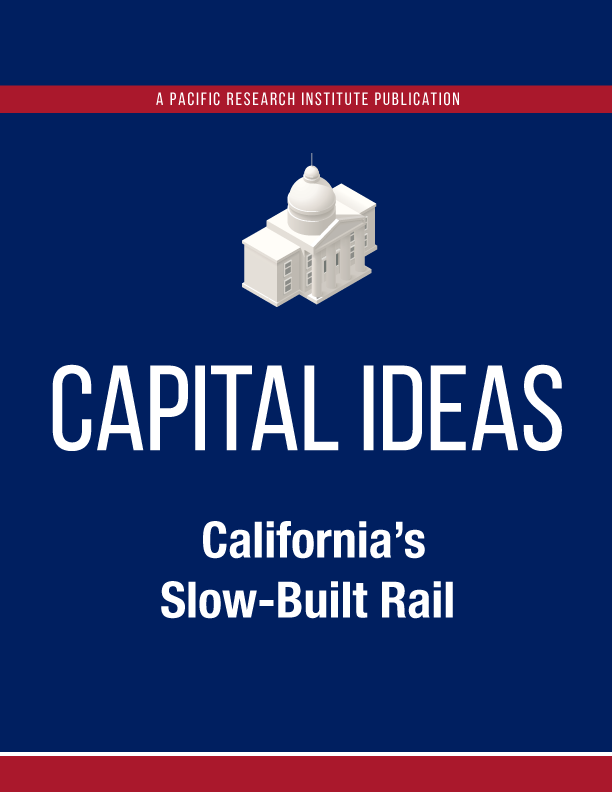One of the Legislature’s jobs in the final month of the 2021 session is to make a high-speed rail funding decision. The question is how many more billions will be wasted this year on a project that sensible lawmakers would have abandoned long ago.
The Legislature, which reconvened on Aug. 16, will have to work out its differences with Gov. Gavin Newsom, who might be entering the lame duck phase of his public service with a recall election less than a month away. When lawmakers sent Newsom in late June a budget bill to sign, it did not have the $4.2 billion he and the High-Speed Rail Authority had asked for to complete the system’s first section, a 119-mile span in the Central Valley that will shuttle back and forth more open seats than passengers.
Sold to voters as the elite transportation choice of the future that would whip passengers between San Francisco and Los Angeles in fewer than three hours, the train has become both an embarrassment and an example of the damage that results from political bullheadedness. While costs have soared far beyond the initial estimate of $33 billion, and estimated travel times increased so sharply that to call it a “bullet train” is to mock it, the few miles of rail that have been laid sit unused a year after the entire San Francisco-Los Angeles leg was to have been in operation.
It’s nearly impossible to name a public-works project on the scale of California’s high-speed rail that has run into as many problems as it has. Delays arrive as if they are keeping a schedule. As UCLA economist and Hoover Institution senior fellow Lee Ohanian wrote a couple of years ago, the train’s sketchy history creates expectations that “the next mistake and the next lawsuit are just around the corner.”
Among the more recent disruptions, coming nearly 13 years after voters approved the high-speed rail through Proposition 1A, and eight years after the first construction contract was awarded, is a disagreement between politicians regarding the train’s power source. While federal funding requires the system to use overhead electrical lines, a group of Sacramento lawmakers wants “to keep open the option of powering locomotives with batteries or fuel cells,” the Los Angeles Times reports, “arguing that the switch could help the state avoid the high cost of installing overhead lines, a system used worldwide since the 1960s.”
Times reporter Ralph Vartabedian also notes that Newsom, and Speaker Anthony Rendon “and his Assembly allies” are feuding over the train’s next construction step. The governor wants “to stick to his plan of building the first segment” in the Central Valley, while Rendon and his allies want to divert funding to sections in Southern California and the Bay Area. It appears they might be serious enough about their position to withhold the $4.2 billion to get their way.
It’s possible, though not certain, that the train would have fared better had construction begun in the urban areas Rendon prefers. What is clear is that growing from the middle out toward population centers was a strategic mistake, in no small part because the growing public perception is that the state is building a train to nowhere.
“We did this really backwards, and now we’re starting to really see the political price of that decision,” says Ethan Elkind, of University of California, Berkeley School of Law.
But no matter where the first spike was driven, the High Speed Rail Authority would still not have been able to avoid its many cost overruns, falling ridership projections, higher-than-estimated fares, slower travel times, and the complications caused by: design and construction being kicked off before sufficient land to build on had been acquired; incomplete planning; and a failure to meet engineering challenges.
Further clouding the train’s future is the absence in Washington’s $1 trillion infrastructure bill of any direct reference to the project. Officials have acknowledged they will have to compete with other states for funding. It will be an existential struggle, because there’s not enough money remaining to keep the enterprise alive for more than a few months.
It’s a loss which would be felt by only a few, though.
“Government transportation decisions have absolutely nothing to do with transportation,” says independent transportation analyst Tom Rubin. “The real truth is that decisions for huge capital expenditure projects such as the California high-speed rail are far, far more about satisfying the various interest groups.”
That fact alone should be sufficient grounds for dumping a speculative undertaking stuck in neutral.


